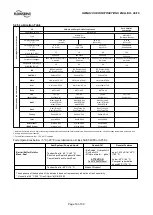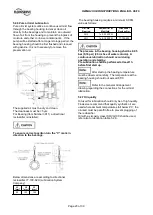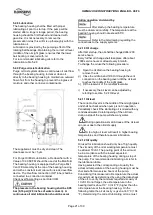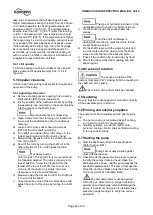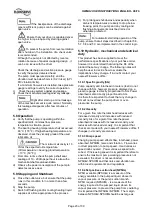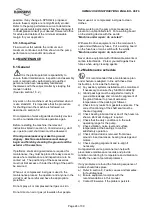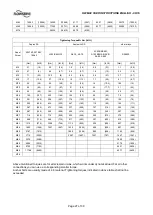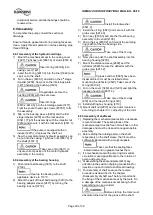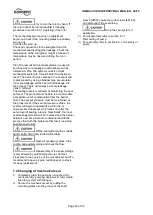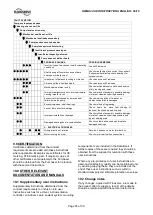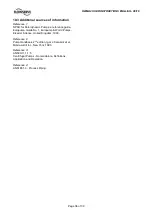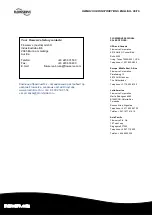
HWMA2 USER INSTRUCTIONS ENGLISH - 06/16
Page 31 of 39
sleeve!
7.0 AUXILIARIES
7.1 Seal and seal systems
7.1.1 Single Mechanical Seal with API – Plan 11
Refer to mechanical seal drawing and
auxiliary piping drawing.
The pump is equipped with a single mechanical seal.
The cartridge design allows to change the
mechanical seal without taking it apart.
Try to turn the rotor by hand.If the
rotor cannot be turned readjust it following procedure
in section 5.3.1
Adjusting of the rotor.
Actions after start up:
Check all connections to the seal gland and the
mechanical seal itself against leakage. It is usual that
at the seal faces a small leakage occurs after start
up, which decreases with the time of operation and
should stop after the seal is run in. Check the
temperature of the seal gland. I slight increase of
temperature may be observed during the run in
period. The mechanical seal is flushed by an API
Plan 11 and the temperature at the seal gland should
be max. 10 °C (18 °F) above the pumped liquid
temperature, unless otherwise specified by
mechanical seal supplier.
In Plan 11, product is routed from the pump
discharge via an orifice to the seal chamber to
provide cooling for the seal and to vent air or vapors
from the seal chamber. Fluid then flows from the seal
cavity back into the process stream.
Disassembly of the seal cartridge
is only allowed by authorized personal. Contact
Flowserve for any service of the mechanical seal. We
recommend to have a spare cartridge seal on stock
for easy replacement.
7.1.2 Single Mechanical Seal with API–Plan 13+61
Refer to mechanical seal drawing and
auxiliary piping drawing.
The pump is equipped with a single mechanical seal.
The cartridge design allows to change the
mechanical seal without taking it apart.
Try to turn the rotor by hand.If the
rotor cannot be turned readjust it following procedure
in section 5.3.1
Adjusting of the rotor.
Actions after start up:
Check all connections to the seal gland and the
mechanical seal itself against leakage. It is usual that
at the seal faces a small leakage occurs after start
up, which decreases with the time of operation and
should stop after the seal is run in period. Check the
temperature of the seal gland. I slight increase of
temperature may be observed during the run in
period. The mechanical seal is flushed by an API
Plan 13 and the temperature at the seal gland should
be max. 10 °C (18 °F) above the pumped liquid
temperature, unless otherwise specified by
mechanical seal supplier.
In API Plan 13 product is routed from the seal
chamber back to the pump suction to provide cooling
for the seal and to vent air or vapors from the seal
chamber. The seal chamber is subjected to discharge
pressure.
API Plan 61 has tapped and plugged connections for
the purchaser´s use. Typically this plan is used when
the purchaser is to provide fluid (such as steam, gas, or
water) to an external sealing device.
Refer to the GA - drawing for the
required quench medium, pressure and flow.
Disassembly of the seal cartridge
is only allowed by authorized personal. Contact
Flowserve for any service of the mechanical seal. We
recommend to have a spare cartridge seal on stock
for easy replacement.
7.1.3 Dual Mechanical Seal unpressurized with
API–Plan 11+52
Refer to mechanical seal drawing and
auxiliary piping drawing.
The pump is equipped with a dual mechanical seal.
The cartridge design allows to change the
mechanical seal without taking it apart.
Try to turn the rotor by hand.If the
rotor cannot be turned readjust it following procedure
in section 5.3.1
Adjusting of the rotor.
The mechanical seal requires no adjustment
anymore. Check if the mounting plates are already
swung out.
Actions after start up:
Check all connections to the seal gland and the
mechanical seal itself against leakage. Check the
temperature of the seal gland. I slight increase of



